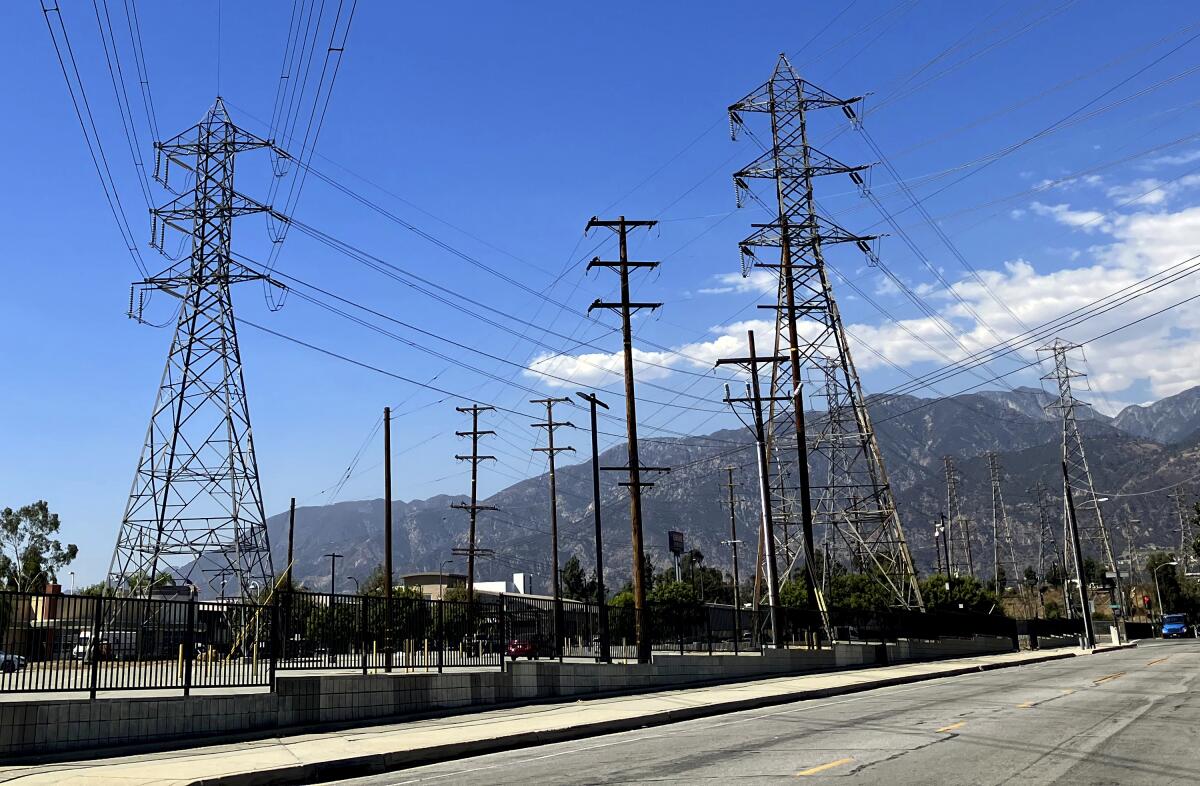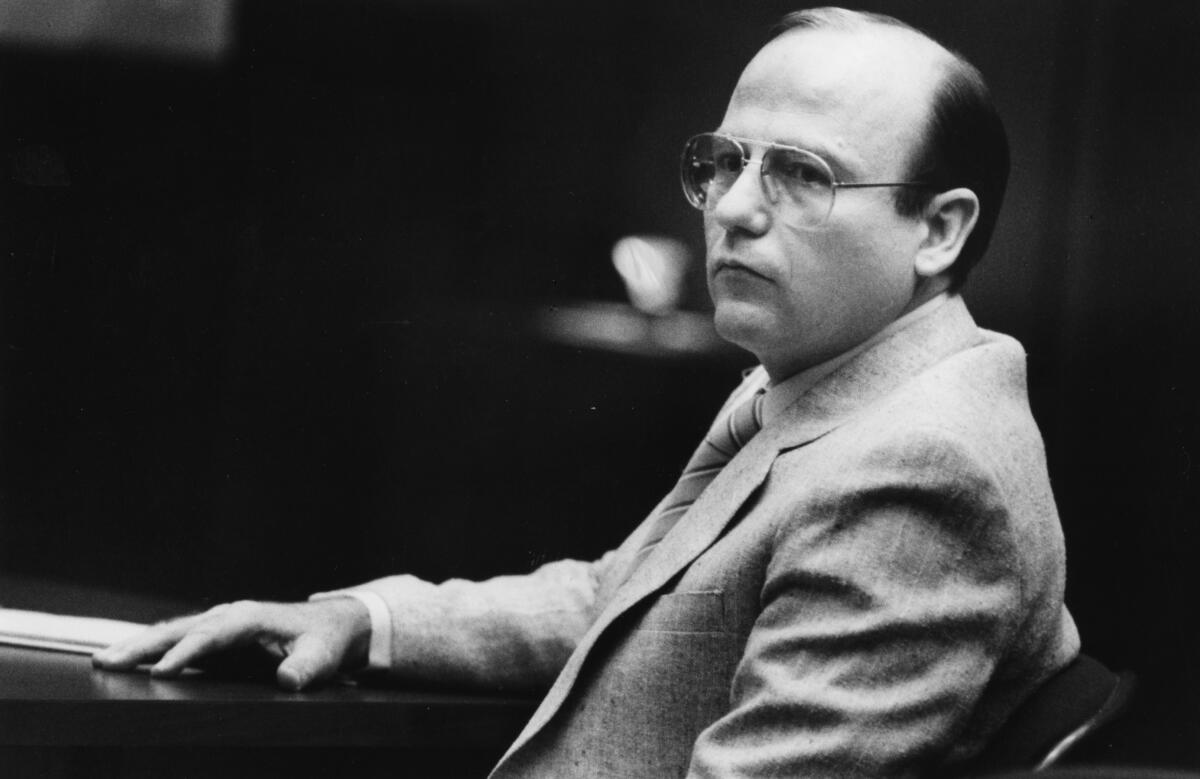Why your electricity bill might go up as early as next year

- Share via
Good morning. It’s Thursday, May 16. Here’s what you need to know to start your day.
- Many Californians will see a change in their electricity bill next year
- From Baja to British Columbia, these are the 101 best West Coast experiences
- And here’s today’s e-newspaper
You're reading the Essential California newsletter
Our reporters guide you through our biggest news, features and recommendations every morning
You may occasionally receive promotional content from the Los Angeles Times.
Will you spend more or less when California changes the way you pay for electricity?
If you use a lot of air conditioning, live in a big house or own an electric car, your electricity bill might go down starting next year. If you don’t, odds are you’ll start paying more, thanks to a change to how electricity bills work that the California Public Utility Commission unanimously approved last week.
The change, backed by the utility companies, will affect at least 34 million Californians who are customers of utility companies such as Pacific Gas & Electric, Southern California Edison and San Diego Gas & Electric. It does not apply to customers of municipal utilities like the Los Angeles Department of Water & Power.
My colleague Melody Petersen reported on the proposal. Here’s what you need to know about the new billing system.
Big energy users could pay less, low energy users could pay more
The new electricity bills will be composed of two parts: usage rate, and a fixed charge to cover costs such as maintaining electric grids.
The flat rate will be $24.15 for most customers. Low-income customers will be eligible for discounted fixed fees of $6 or $12. Customers will not be required to verify their incomes, according to the commission.
For those enrolled in the California Alternate Rates for Energy (CARE) program, the monthly fixed rate will be $6 instead of $24.15, and for Californians enrolled in the Family Electric Rate Assistance Program (FERA), it will be $12.
“This billing structure does not impose any new fees,” said the commission. “It simply reallocates how existing costs are shared among customers.”
Customers who use a relatively large amount of electricity per month — such as those living in hotter climates and electric vehicle owners — will see the most benefits, said Mary Flannelly, policy and communications advisor for the CPUC’s independent Public Advocate’s Office.
The CPUC estimates that households that power every home appliance and a vehicle with electricity will save an average of $28 to $44 monthly with the new rate structure. If you’re a low energy user, Flanelly said, your flat fee might add more to your bill than you’ll save from the lower usage rates.
In an analysis conducted for the Stop the Big Utility Tax coalition, Flagstaff Research estimated that under the new billing system, about 4 million households that use lower levels of electricity would pay $65 to $225 more a year.
Utility companies pushed for this change and say it’s a win
Professors at UC Berkeley’s Energy Institute wrote a paper in 2021 that proposed reducing the rate per kilowatt-hour and introducing a new progressive flat rate that rose according to income, among other things.
The utility companies, which partly fund the institute, liked the paper’s recommendation because the new monthly fee would allow them to more evenly distribute fixed costs among customers, while making it more cost-effective for more Californians to switch to electric appliances and vehicles.
PG&E asked the CPUC, which is composed of commissioners appointed by Gov. Gavin Newsom, for a new monthly charge a year later in a regulatory filing. Newsom introduced an enormous budget revision three months after that, which included legislation “to adjust electricity rates to predetermined fixed charges.” The bill went from Assembly to law in four days, without discussion in the Assembly committee hearing.
The utility companies suggested that the monthly flat fee be as high as $128 — which the CPUC rejected last week, offering the plan that passed instead.
These changes soften the financial pain of using a lot of electricity, which utility companies and the CPUC hope will incentivize more people to switch to electric cars, stoves and other appliances.
“This new billing structure puts us further on the path toward a decarbonized future,” said the commission’s president, Alice Reynolds.
Profits or prevention?
The CPUC says the change is not designed to generate extra profits for electric companies. Instead, the revenue from the fee will help cover the costs of maintaining the electric grid, preventing wildfires and funding energy efficiency programs.
The commission also hopes to collaborate with the utility companies to educate customers on the new rate structure.
The proposal will go into effect in late 2025 for customers of SCE and SDG&E, while PG&E customers will begin receiving the new electricity bills in early 2026.
Read more from my colleague Karen Garcia on how to reduce your electricity use.
Today’s top stories
State of the restaurant industry
- The shocking state of the restaurant industry: ‘We can’t afford to be open. We can’t afford to be closed.’
- Do we still need spaces to support women in restaurants? Certainly, this L.A. group says.
- Fifteen L.A. restaurants and chains where a $15 budget goes far.
- Where every cent of $1 goes at one L.A. restaurant, explained.
- The year that killed L.A. restaurants: Here are more than 65 notable closures from 2023.
Campus protests
- UC Berkeley to consider divestment from weapons as pro-Palestinian protesters remove encampment.
- Police clear UC Irvine camp and make arrests after protesters occupy science building.
- ‘Maximize chaos.’ UC academic workers authorize strike, alleging rights violated during protests.
- Sonoma State president is put on leave for ‘insubordination’ for supporting Israel academic boycott, divestment.
Crime and courts
- A Tesla going more than 100 mph. A suspended license. Three young lives cut short. Inside the Pasadena crash.
- Police identify Steve Buscemi’s alleged attacker a week after ‘random act of violence.’
- Sexual abuse by coaches and teachers at Rosemead High School is alleged in a lawsuit by former students.
- A trial over mass evictions at Barrington Plaza could hinge on the meaning of ‘permanent.’
Politics
- Biden and Trump agree to debates: June 27 on CNN, Sept. 10 on ABC.
- Will North Korea be a bigger threat under Biden or Trump?
- Sen. Bernie Sanders endorses 2 California ballot measures, including rent control expansion.
Tesla troubles
- Air regulators ding California Tesla factory over air pollution.
- Tesla to cut 601 jobs in the Bay Area, a sign of more problems for the EV maker.
More big stories
- How Los Angeles County became home to the biggest AAPI communities in the country.
- Migrants from around the world have made this stretch of California the top place to enter the U.S. illegally.
- This anesthesiologist is L.A. County’s highest paid employee. He works 94 hours a week.
- California is offering drivers $400 gift cards to test its alternative to the gas tax.
- Inflation improves slightly in April, but high cost of housing remains a big obstacle.
- Vietnamese groups are furious over ‘Jane Fonda Day’ in L.A. County.
- A woman makes history with a shark-infested swim to a remote California island.
- Netflix will carry two exclusive NFL Christmas games in 2024.
- Deadly overdoses fell in the U.S. for the first time in five years, new estimates show.
- Big Sur’s Highway 1 to reopen Friday — ahead of schedule — after major rockfall.
- UC Regents order UCLA to pay $10 million annually in ‘Calimony’ for three years.
Get unlimited access to the Los Angeles Times. Subscribe here.
Commentary and opinions
- Jackie Calmes: The Supreme Court’s conservatives onstage, unplugged and unrepentant.
- Gustavo Arellano: L.A.’s only Spanish-language children’s bookstore will soon get más grande.
- Mark Z. Barabak: Champagne wishes and caviar dreams ... of a Senate seat in Wisconsin?
- Anita Chabria: Can this Central Valley Democrat beat the Newsom curse?
- Bill Plaschke: Gritty Sparks bring new hope and winning effort during their season opening loss.
- Michael Hiltzik: Inside the effort by two Beverly Hills billionaires to kill a state law protecting farmworkers.
Today’s great reads
L.A.’s dirtiest cop: A mild-mannered traffic officer who moonlighted as a hit man. William Leasure, killer cop, still denies the big crimes, the ones that put him in prison: orchestrating the contract murders of a beauty shop employee and a jazz bassist.
Other great reads
- A rare songbird’s epic journey from the edge of extinction back to the L.A. River.
- She didn’t know there was an Amy Winehouse inside of her. Then the voice came out.
- Meet Estevie, the Gen Z cumbia pop star in the making.
How can we make this newsletter more useful? Send comments to essentialcalifornia@latimes.com.
For your downtime

Going out
- 🐋 🚣🏽 From Baja to British Columbia, these are the 101 best West Coast experiences.
- 🌈 ‘Prepare to be enthralled’: How to see Yosemite’s enchanting rainbows that form at night.
- 🎭 After 34 years, David Hockney’s magnificent ‘Turandot’ sets get resurrected in L.A.
Staying in
- 📚20 new books you need to read this summer.
- 📺 CNN to adapt popular British comedy quiz show for Saturday nights.
- 🧑🍳 Here’s a recipe for buttermilk biscuits.
- ✏️ Get our free daily crossword puzzle, sudoku, word search and arcade games.
And finally ... from our archives

On this day 38 years ago, the action blockbuster “Top Gun” was released in theaters, making Tom Cruise an international star.
In the Times’ 1986 review of the film, writer Michael Wilmington said the film was “both exciting and disturbing, mind-boggling and vacuous.”
Have a great day, from the Essential California team
Defne Karabatur, fellow
Kevinisha Walker, multiplatform editor and Saturday reporter
Christian Orozco, assistant editor
Karim Doumar, head of newsletters
Check our top stories, topics and the latest articles on latimes.com.
Sign up for Essential California
The most important California stories and recommendations in your inbox every morning.
You may occasionally receive promotional content from the Los Angeles Times.






